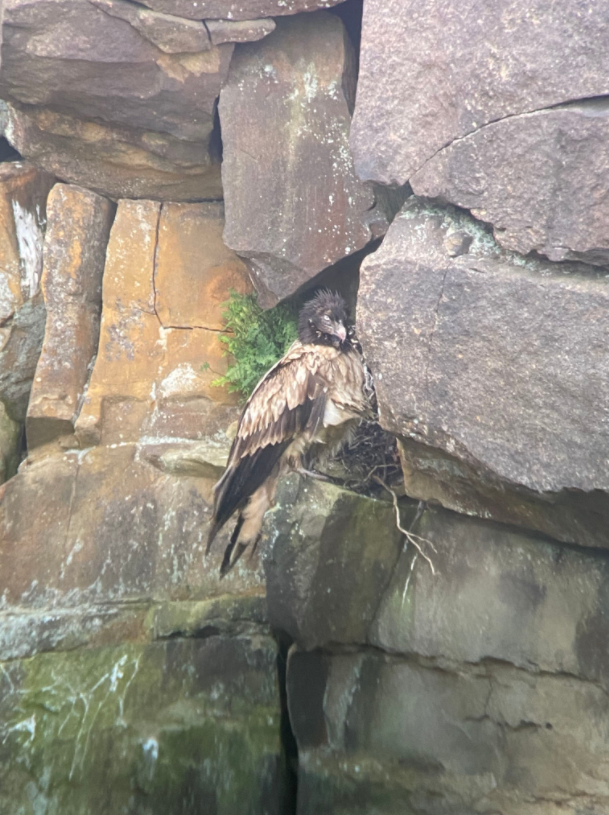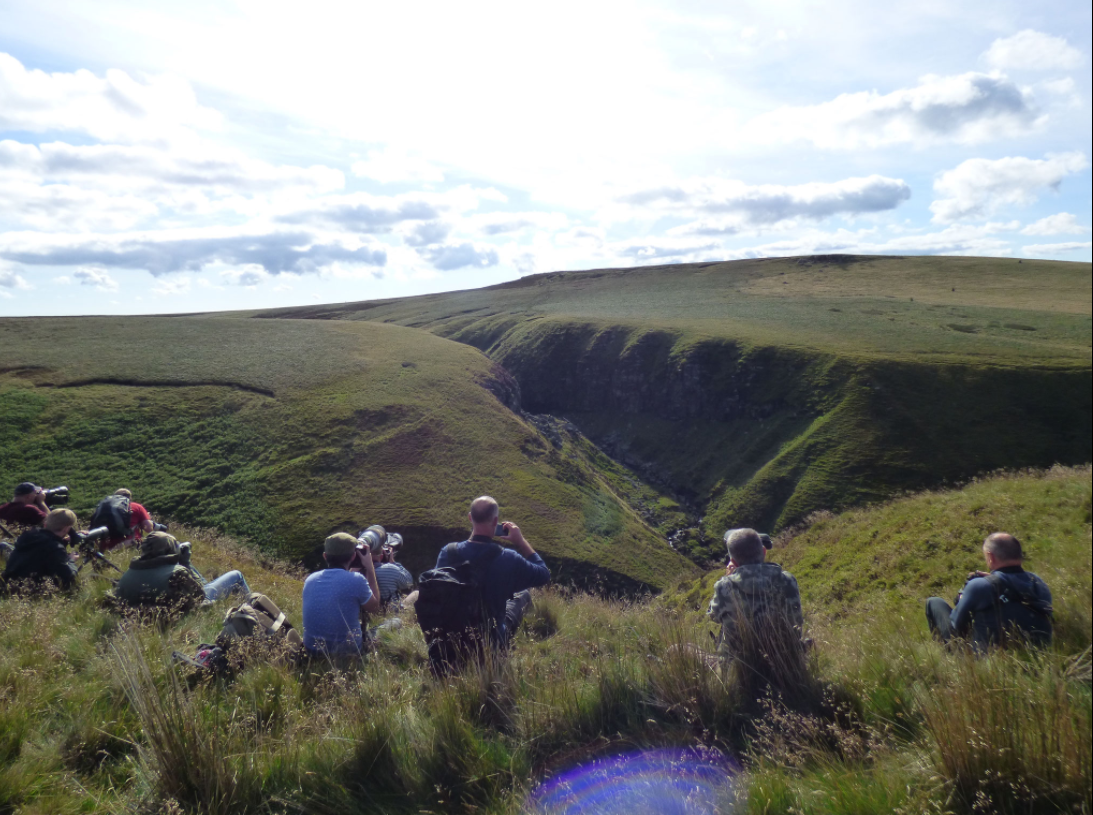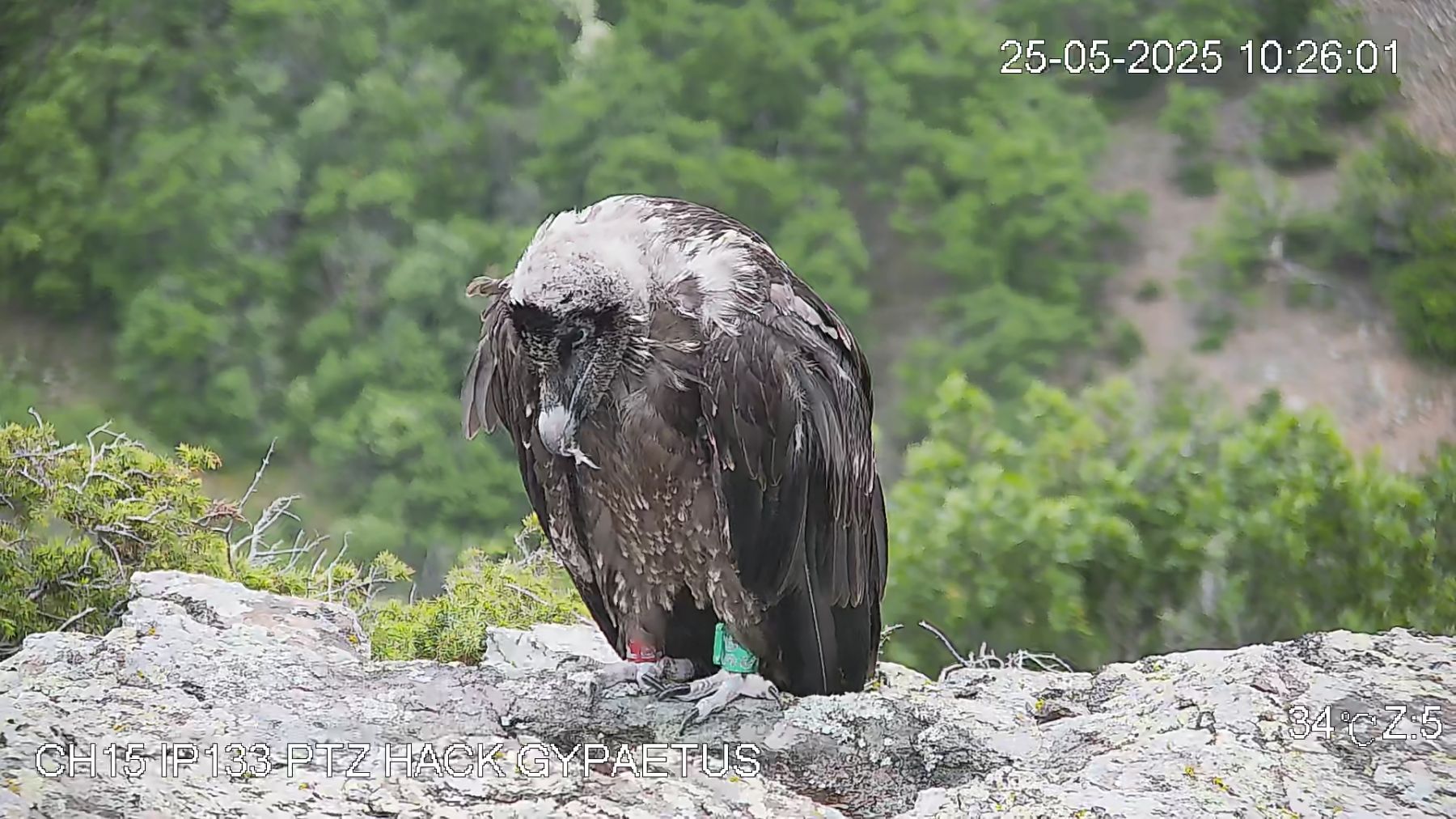
A bone-eating Bearded Vulture, one of Europe’s rarest and largest raptors, left its mountain range and visited unusual corners of Europe, causing quite a frenzy. At first, it visited the Netherlands and Belgium and then made its way to the Midlands in the UK.
Why did the bird travel to the UK in the first place, where did it come from and is it going back home?
Which areas did the Bearded Vulture visit in the UK?
The Bearded Vulture was first spotted in the UK on 25 June in Kenilworth, and then made its way north, exploring Derbyshire and Yorkshire, and regularly using a roost site in the north of the Peak District National Park.
This is one of the areas in the UK that the Bearded Vulture might favour, due to relatively good availability of sheep carcasses, as well as typical roost sites located on rugged cliffs and rocky outcrops. As these birds do not like to be disturbed and need to feed quite regularly, other suitable areas that it might travel to next could be the mountainous national parks of northern Wales, the Lake District or the Scottish Highlands. In those areas, the food availability is also likely to be better, with larger populations of wild deer and feral goats, in addition to sheep.
Why did the Bearded Vulture travel to the UK?
It is normal for young Bearded Vultures to range across vast areas, often outside their typical breeding habitat in mountain ranges. Each year, there are several records of immature Bearded Vultures “out of range” in northern Europe, including some birds released as part of the Alpine reintroduction project, which the Vulture Conservation Foundation (VCF) manages in cooperation with many local partners. The first dispersal movements of Bearded Vultures start in spring from their second calendar year, just like in the case of this bird, which hatched in 2019. These dispersal movements probably serve to establish connections with other populations. Other possibilities include that young individuals follow other migrating birds and are aided by strong winds, but we do not know precisely why. In the case of Alpine Bearded Vultures, but also birds from Andalusia, most of the dispersion occurs to the north, which is also puzzling.
The very unusual thing about this long-distance journey is the fact that the bird successfully crossed the English Channel, even though Bearded Vultures rarely cross large water bodies and have only arrived in the UK once before in 2016 (in living memory at least). Perhaps the crossing was assisted by a strong southerly tailwind.
Where did the Bearded Vulture come from?
The VCF coordinates the Bearded Vulture captive breeding network in Europe (EEP) that breeds the species in captivity to support reintroduction or restocking projects. All released birds in the reintroduction projects managed by the VCF are ringed, equipped with a tracking tag and some of their feathers are bleached to identify them in flight, which should still be visible at this age. So, as this bird does not have any ring, tag or markings, it is a wild-hatched bird coming from the Alps or the Pyrenees. We cannot tell for sure in which specific region this bird came from unless we get a blood sample or a feather. The VCF recently managed to determine the origin of another wandering Bearded Vulture rescued in Indre-et-Loire, France, and rehabilitated at Hegalaldia (64). Not only did the genetic analysis reveal that the bird came from the Alps, but it also pinpointed that it was Pierro — a vulture hatched at Bargy Massif in Haute-Savoie in 2019 whose father is the first wild bird from the reintroduction project in the Alps that started over 30 years ago! So, if a birder comes across a Bearded Vulture feather in Derbyshire or Yorkshire (of course without disturbing the bird), they should get in touch with the VCF at info@4vultures.org to try and learn the background of this wandering Bearded Vulture.
Will the Bearded Vulture return home?
As long as the bird continues to find food and a safe roosting site, it might not feel the need to move on. This is an unprecedented situation so it is very difficult to predict how the bird will behave and adapt to its new surroundings. If it returns south then it would need to cross the English Channel again, which is a potentially hazardous journey. To return to the Alps or Pyrenees it would need to find enough food along the way, as well as avoid the different threats that are sometimes more numerous in lowland areas, such as collisions with power lines. It is not unusual for these long distance travellers to have to be rescued (often weakened due to lack of food), rehabilitated and re-released in more suitable habitat. With so many birders keeping an eye on the vulture in the Peaks, for now at least, it should be possible to monitor the condition of the bird, and whether it is seen eating regularly or not. It will also be important to limit any disturbance so that the bird can feed successfully. Another concern is that the bird has now moved to the worst raptor persecution hotspot in Britain.
Why Bearded Vulture and not Lammergeier
In old language, “Lammergeier” means the vulture with the lamb. In several regions, people believed that Bearded Vultures were stealing sheep and even small children. Due to this misperception, the species was hunted and poisoned to extinction in some regions like the Alps, where the last Bearded Vulture was shot in 1913. As part of the Bearded Vulture reintroduction efforts and conservation, the VCF advocated to change the official English name to Bearded Vulture and emphasises awareness and education about the species to avoid such misperceptions that can have a negative effect on the conservation of the species.
This is a great opportunity to demonstrate once again how such an enigmatic, flagship species such as the Bearded Vulture can stimulate so much interest and excitement among a diverse range of stakeholders, boding well for their future conservation.
But, let’s remember that the Bearded Vulture is a protected species with about 400 pairs remaining in Europe and is quite sensitive, gravely affected by disturbance. Please appreciate this unique and beautiful bird from a safe distance!
If you have any more questions about the Bearded Vulture in the UK, feel free to ask us on Twitter.
Sign up to the VCF’s monthly newsletter and never miss any vulture news!







